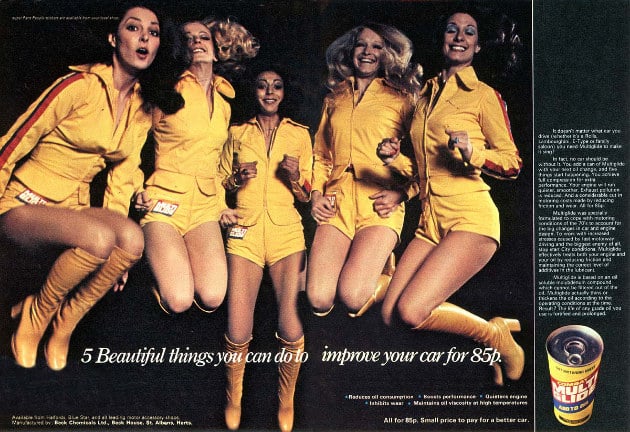
Is it Authentic or Does It Hurt The Brand?
A lot of marketing and advertising efforts struggle to be authentic, which is to say that a lot of advertising and marketing seems fake, blatantly self promotional, and/or too “slick” to be taken seriously. Consumers see the ad or the content, they judge it to be lacking authenticity, and then they reject it. Marketing fail.

Chevy’s #TechnologyandStuff campaign for the 2015 Colorado was an accident. The phrase “Technology and Stuff” was accidentally uttered by a spokesperson at the World Series. Instead of shunning the phrase for being “off brand” or “off message,” Chevy ran with it and did great. The lesson? Authenticity works.
Here’s an easy process for avoiding these authenticity failures.
Where Inauthentic Ads and Content Come From
The main cause of these inauthentic advertising and marketing failures, in a word, is “branding.”
Sometimes failure starts with the wrong ad and content generation process. Instead of creating ads and content that speaks to the customer, ads and content are created around a branding message that the company wants to “push.” This decision to push a specific brand message on the customer rarely succeeds…if the message is one that the customer cares about, it shouldn’t have to be “pushed.”
Other times, the failure occurs because a good idea is ruined. Here’s how it goes down:
- Someone creates an ad or piece of content that does a good job of speaking to the consumer
- A well-meaning decision maker decides that this ad or piece of content “doesn’t reflect the brand’s values,” “doesn’t have the perfect message,” “lacks polish,” etc.
- The ad or content is polished and altered to meet the brand requirements, but authenticity is lost during the process
The good news is that both of these scenarios can be avoided by following a simple checklist.
Avoiding The Inauthentic Content Fail – Five Questions
1. Who’s idea was this ad or content anyway? One of the very best ways to tell if content or advertising will fail the authenticity test is to ask who came up with it. If the answer is “someone who doesn’t have day-to-day contact with consumers” or “someone who doesn’t do marketing for a living,” it’s time to be concerned.
Quite frankly, business owners, CEOs, etc. are often the biggest generators of failed advertising and content. This is simply because they’re far too familiar with the business itself (and the industry) and not nearly familiar enough with the consumer.
Instead, the best people to come up with content and advertising ideas are typically:
- Customer service and sales staff, who interact with consumers daily and have a good feel for what consumers care about
- Marketing professionals who use data and tools to learn about customers
- Publishers/bloggers who talk about your products
2. Who is the intended audience and why should they care? The first half of the question – intended audience – is usually easy. The second part – why should they care? – is usually hard.
The very best way to tell if your intended audience is going to care is to ask them. You can pick up the phone, call a handful of random customers, ask them to be brutally honest, and see what happens. Your feelings might get hurt, but you’ll learn a ton.
You can also use Google Consumer Surveys to test various messages, reference search query data and keyword research to see what questions consumers have, etc.
3. What are the expectations our audience will have? Content and advertising that makes it past the first two questions can often become horribly crippled when someone starts worrying about how the content or ad will “reflect” on the brand.
Usually, the worry is that the message doesn’t conform to preconceived notions about what ads or content should be, doesn’t look the way someone important thinks it should look, and/or doesn’t have the message that the company is trying to “push.” These are all bad reasons to change the content or ad.
Instead, ask yourself about your audience’s expectations:
- Does the consumer expect that your pay-per-click ads will be 100% on message, or do they expect them to be descriptive? Does the consumer expect to find a series of marketing messages in a how-to article? Etc.
- Does the consumer expect the quality to be perfect?
- Does the consumer expect to see an ad that conforms to the nitty gritty details of the style guide?
- Does the consumer expect to see a perfectly multicultural mix of people in the photos?
- Does the consumer expect to see a scantily clad model posed next to a vehicle?
Etc.
In many cases, you’ll find that audience expectations are not at all in line with whatever branding concerns and guidelines you have. While that doesn’t mean you want to throw the guidelines out the window, it does mean that you can choose to ignore guidelines from time to time.

Does anyone believe that consumers expect to see scantily clad women in advertisements for automotive products? Does anyone want to risk irritating half the world’s population to find out? This is a great example of dumb advertising in action…unfortunately, there are contemporary ads that go much further than this one.
4. What’s the risk? Say, for example, the ad or content that has everyone worried goes out the door as-is. What’s the potential for harm?
- Will the ad or content offend people? Offending people’s inalterable traits (like race, gender, sexuality, etc.) is a cardinal sin. Offending a lifestyle or culture is a formula for disaster. Making light of tragedy – personal or otherwise – is fraught with peril. Sexual innuendo and content can often be viewed as offensive or demeaning.
- Will the ad or content leave the company vulnerable to a lawsuit or other type of legal action? As fun as it might be to slander the competition – or to make claims that will put you under the FTC’s scrutiny – it’s best to avoid these scenarios.
- Will the ad or content contradict previous ads or content? Contradiction is counter productive.
- Does the ad or content contain a joke that might not land? Being funny is hard. If you’ve got an ad or piece of content that might not be funny, it’s a risk. Unfunny becomes ‘offensive’ all too quickly.
The risks are hard to define, and the risk assessment process – by it’s very nature – can lead to lots of different people collaborating to ruin an advertisement or content item. Therefore, it’s a good idea to let one person make the final decision on riskiness, rather than make this decision by committee.
5. Can the source or origin of the ad or content be changed? User generated content is wildly popular with big brands, and one of the reasons the brands love it so much is that it’s easy to disavow. If a customer creates a funny – yet offensive – video that promotes your company, you can reap the rewards of the content while officially stating that your company does not condone jokes about blah blah blah…
If you’ve got a piece of content or advertisement that you can’t publish as your own, why not find a way to encourage someone else to create the content for you at arm’s length? There’s nothing that says you can’t contact a publisher and “plant” an article idea, or encourage one of your distributors to use the idea you couldn’t quite get approved internally.
More Content
One of the keys to selling auto parts and accessories online is trust. Trust comes from a strong brand, a nice-looking website, and lots of…
Read MoreIf you are creating a new website or reconsidering your existing domain name and hosting arrangement, this post is for you. We cover the basics…
Read MoreAuto parts and accessories manufacturers and retailers that advertise need to understand return on ad spend (ROAS). In this three-minute video, Spork Marketing Founder Jason…
Read MoreSUBSCRIBE
We'll send you actionable parts and accessorries marketing articles every month - just sign up below.




